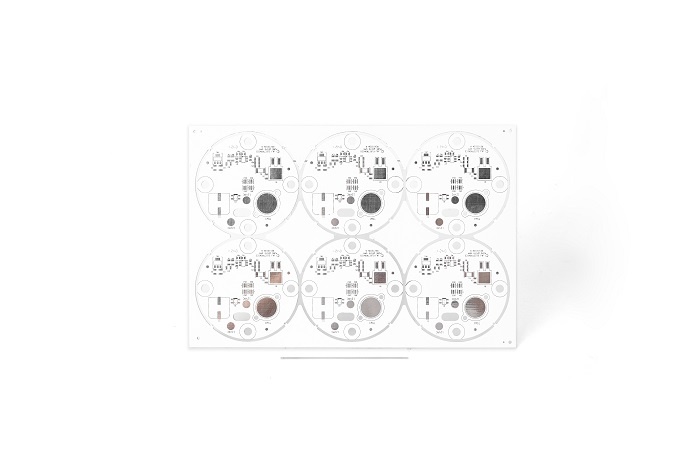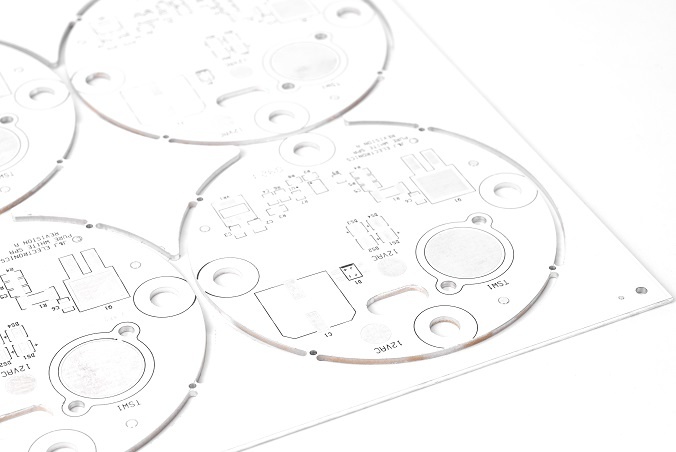What are the advantages of aluminum PCB circuit board?
- Views
- 12 Apr 2024
Electronic equipment is developing towards high integration and high power density, and the selection of PCB substrate materials has become a key factor affecting product performance and cost. The advantages and disadvantages of ceramic PCB circuit boards were introduced earlier. One of the disadvantages is that ceramic substrates are too expensive and fragile. Ordinary fiberglass PCB has poor heat dissipation, while ceramic PCB is relatively stable and not easily deformed in high temperature and high humidity environments. However, it is more expensive and is commonly used in high-end products. So, is there a PCB substrate material that can not only meet the needs of efficient heat dissipation but also have cost advantages? If my product is not so high-end, such as a large-area and high-power LED light panel, which is relatively cheap but requires very good heat dissipation performance, is there a PCB substrate made of cheap material and good heat dissipation?

Why use aluminum PCB?
Aluminum PCB consists of three layers: copper foil, insulation layer and metal aluminum. Since there is an insulating layer, can other materials be used for the metal layer besides aluminum? Although the metal layer can theoretically use a variety of materials such as copper plates, stainless steel plates, iron plates, and silicon steel plates, after comprehensive consideration of many factors such as heat dissipation performance, thermal expansion coefficient, thermal conductivity, and strength, aluminum plates are the most suitable for comprehensive conditions.
Considering conditions such as cost and technical performance, aluminum plates are an ideal choice. If there are requirements for higher thermal conductivity, mechanical properties, electrical properties and other special properties, copper plates, stainless steel plates, iron plates and silicon steel plates can also be selected flexibly.
The wide application of aluminum PCB in LED lighting products confirms its excellent heat dissipation characteristics. It has a double-sided design, making full use of the high thermal conductivity of aluminum. The two sides are distinguished. One side is used for welding LED pins, and the other side is used for welding LED pins. Apply thermal ink to enhance heat dissipation. It greatly improves the thermal management efficiency of LED or other electronic equipment.

What are the advantages of aluminum PCB?
Compared with traditional FR-4, aluminum substrates can not only minimize thermal resistance and achieve excellent thermal conductivity, but also show advantages over ceramic substrates in terms of mechanical properties.
In addition to good heat dissipation performance, aluminum substrates also have the following advantages?
Comply with RoHS environmental protection requirements
More suitable for SMT process
Higher current carrying capacity
Extremely effective treatment of thermal diffusion in circuit design, effectively reducing module operating temperature,extending service life, and improving power density and reliability
Reduce the assembly of radiators and other hardware (including thermal interface materials), reduce product size, and reduce hardware and assembly costs; optimize the combination of power circuits and control circuits

The core technology of aluminum PCB lies in the insulating layer material in the middle. It not only bears the important tasks of bonding and insulation, but also is the key to determining the thermal conductivity performance. The better the thermal conductivity of the insulating layer, the more conducive it is to the diffusion of heat generated when the device is running, and the more conducive it is to reducing the operating temperature of the device, thereby increasing the power load of the module, reducing the size, extending the life, and increasing the power output. . In addition to good thermal conductivity, it must also have high voltage insulation capabilities.
With its unique design and excellent performance, aluminum PCB is gradually improving the heat dissipation solution in the electronics industry, providing solid technical support for more high-performance, low-cost electronic products. If you want to inquire about aluminum PCB, please send an email to: mcsales@bestpcbs.com.
aluminum PCB, aluminum substrates, advantages of aluminum PCB,
Related Blog
- What is Thermal and Electrical Separating Pad in Metal Core PCB?
- LED PCB Assembly Process: Step-by-Step Guide for Beginners
- Why Always Recommend White Solder Mask Black Silkscreen for Aluminum PCB?
- What Materials Are Commonly Used for Manufacturing Lighting PCBs?
- Everything You Should Know About Metal Core Circuit Board
- What Are the Differences Between Ceramic PCB, Metal Core PCB And Standard FR4 PCB?
- Why Choose Best Technology As Your MCPCB Manufacturer?
- What is LED Light Circuit Board and How to Make it?
- When is International Labour Day in 2024 and What are the Significances of It?
- How Does A Convexity Comes Out On Thermoelectric Separation Copper Based PCB?
- Why is Aluminum LED PCB Important for Indoor Growth Lights?
- Application of Metal Core Pcbs in the Development of LED Technology
- Why Choose White Solder Mask for Metal core PCB When Used In LED Devices?
- Understanding Aluminum LED PCBs in 1000w LED Grow Lights
- What Are the Advantages of Metal Core PCB? How to Choose?
- Automotive Light Copper Core Pcb Production Process—testing
- Why Are Metal Core PCBs, Especially Copper Core, Used In Heat-Sensitive Electronics?
- How do aluminum LED PCBs improve LED efficiency?
- What Are the Differences Between Regular and Thermoelectric Separation Copper-Base PCBs?
- Aluminum PCB VS FR-4 Performance Comparison



